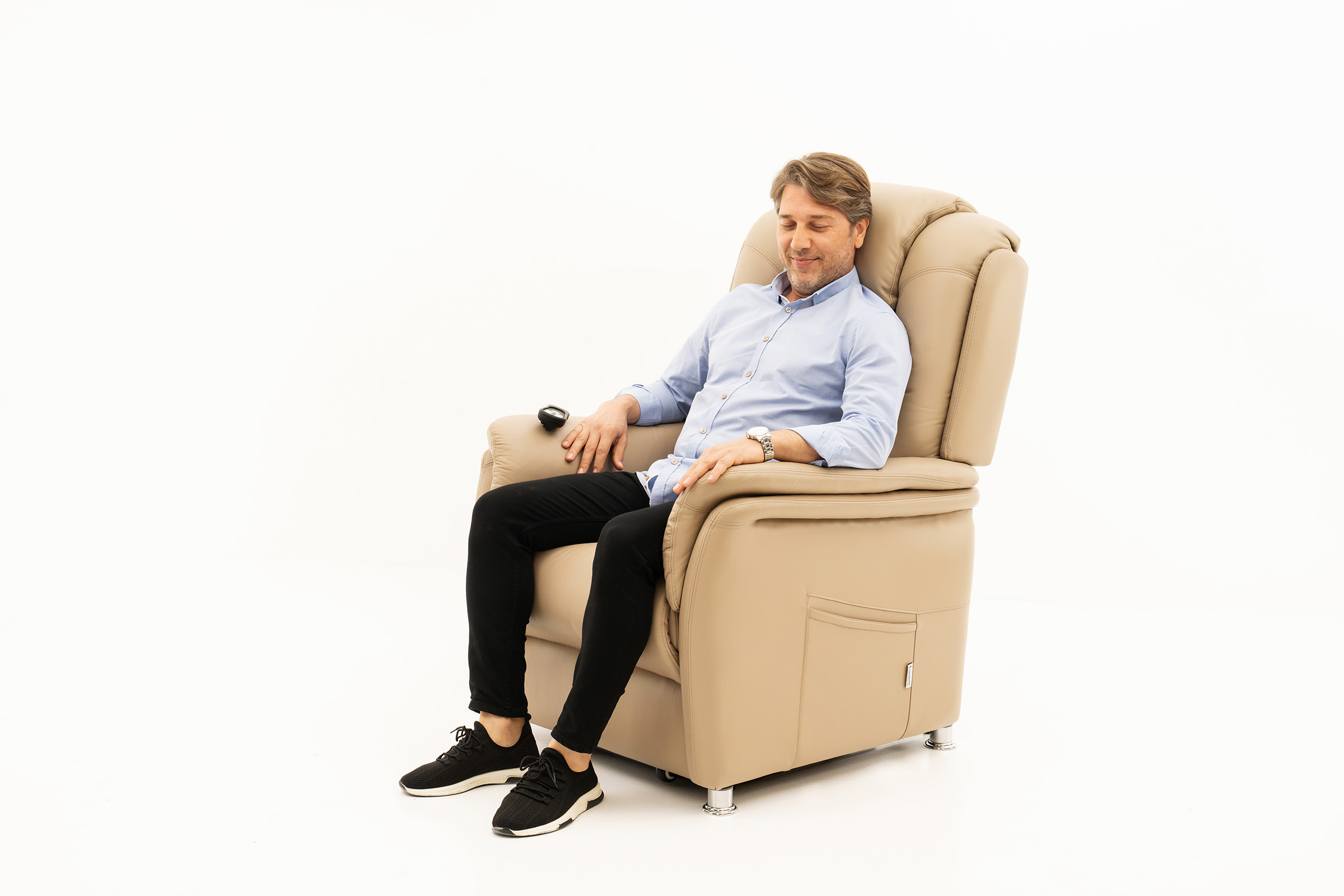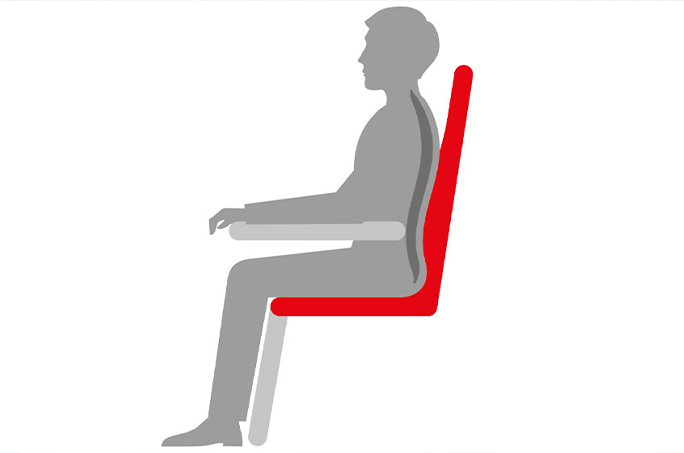Your Cart is Empty
Scientific research has been conducted on how the body can be best supported in a sitting position. As a result, there are five fundamental conditions that a chair should meet for each user. These conditions are:

1- Correct chair height,
2- Correct seat depth,
3- Correct armrest height,
4- Proper lumbar support,
5- Correct seating area.

When your feet are in contact with the ground, and your thighs and calves are at approximately a 90-degree angle, you have reached the correct height.
When sitting too low, the back automatically takes on a rounded shape. You can control this by sitting up and then pulling your kneecaps towards your stomach. You will then feel your back start to inflate by itself. Sitting in a too low chair can also cause constriction of the intestines, along with possible complaints such as bloating and weak intestinal movements.
If you sit too high, it's difficult to keep your feet on the ground. As a result, you must first move forward to be able to stand up and then rely on your arms to descend. Additionally, sitting too high makes it difficult to change positions. As a potential consequence, it can also lead to compression of nerves in the legs while sleeping.


People come in all shapes and sizes: some are smaller, some are larger, some have longer legs, some have longer torsos. Nevertheless, the majority of sofa seat depths are around 53/54 centimeters, which is quite deep. How did this happen when people are so variable in size?
Because this preference is not based on seating comfort but rather on design. Therefore, most people tend to slouch after sitting for a while. This leads to a rounded back, making it quite difficult to move and stand upright.


The contact surface should be sufficiently wide and high enough. Ideally, when the arms are resting on the armrests, the shoulders should not droop or hunch; otherwise, the user cannot relax comfortably. At the correct armrest height, your shoulders should be straight, and your arms should form a 90° angle when resting.
Did you know that your arms weigh about 10% of your total body weight? To relax properly, your arms need good support too. When the armrests are too low, you automatically sink down to ensure your arms rest on them. The result: sitting with a rounded back. Excessively high armrests that exaggerate the shoulders can lead to cramps in the neck and shoulders. Moreover, if there's only one armrest on a couch, for example, there's always a risk of sitting crooked over time.
The lumbar support (approximately at belt height) should be a standard feature in an ergonomic, back-friendly chair. It should be individually adjustable and substantial enough to provide genuine relaxation in every position. This ensures that the spine is in an anatomically correct position without any compression on the intervertebral discs, allowing for their renewal and replenishment with fluid even while lying flat. Thus, it can fulfill its intended cushioning function, preventing almost any signs of wear and tear.
Although each spine has a slightly curved S shape, each spine is unique. When sitting, particularly, a lot of stress is placed on the lumbar vertebrae. This accounts for 70% to 80% of back pain. The curvature of the spine and the length of the torso vary greatly from person to person. Therefore, the height and thickness of the lumbar support should be individually adjustable for each chair. The lumbar support should be able to adjust to the correct height and thickness to adequately support the individual curve of the spine. An ergonomic chair always has the right lumbar support for you.


A backrest that extends up to the shoulders provides good support for your back. Additionally, there should preferably be an adjustable lumbar or pelvic support. Alternatively, specialized lumbar pillows or cushions can be used. The backrest should be supported with spine-friendly design.
When sitting upright, your thighs and calves should form approximately a 90-degree angle. While seated, ensure that the front edge of the seat does not put pressure on the back of your knees.
Your Cart is Empty